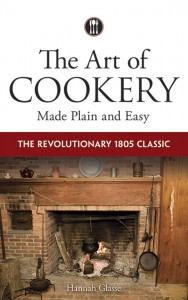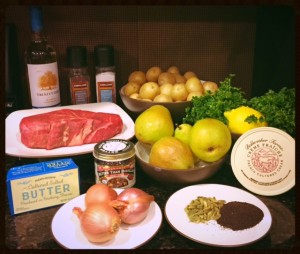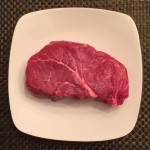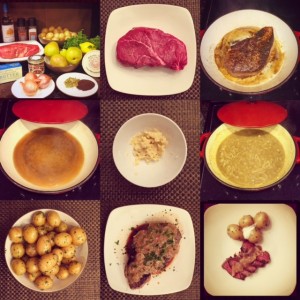A new year, a new round of food challenges.
I have been looking forward to Historical Food Fortnightly for months!
For those who don’t remember, the goal is to create a historical dish based off the challenge listed. Challenges take place every two weeks, hence the name Historical Food Fortnightly. A fortnight being a two week span of time.
The rules are simple:
- Pick a challenge to accept – or ALL OF THEM if you’re crazy like me!
- Research it to find a historic recipe that fits the challenge, including providing sources when available.
- Recreate it as close as possible using modern equipment, documenting it as you go along.
All of history is fair game, provided it is prior to 1960 and no recipe is off limits.
Since the last round of challenges ended, my collection of cookbooks from the Georgian and Regency time periods has increased exponentially and I am always on the hunt for more. This came in handy considering this first challenge fell right at the final push for my submission to the Golden Heart contest.
The Challenge:
Meat and Potatoes January 1 – January 14
They’re a staple for the tables in most rustic cottages as well as the fanciest banquet tables – and it’s also an idiom meaning a staple or the most basic parts of something. Make a historic “meat-and-potatoes” recipes – however you interpret it.
The Recipe:
For this challenge, I chose Pan Fried Steaks with Shallot Sauce and Boiled Potatoes, with poached pears for dessert.
As I mentioned before, this challenge fell in the middle of the final stretch of revisions for my entry to the Golden Heart. Oh, who am I kidding. I rewrote my entire entry and synopsis three days before it was due! Not only was I stressing about the contest, but I was also still working the DJ and fighting the plague that everyone at work has. Needless to say, by the time I even thought about the challenge, it was due the next day, and I didn’t have much time to research.
Georgian and Regency England are very  popular because of Jane Austen. This worked in my favor because there is a wealth of information on the time period. Not just books, but societies and historical centers such as the Jane Austen Centre in Bath. This proved to be an invaluable resource, not only for it’s modern translation of the original 1774 recipe, but it pointed me in the right direction of the original source: Hannah Glasse’s The Art of Modern Cookery Made Plain And Easy which I found on Google books. I am now the proud digital owner of said book, and my hard copy of the modern translation should be here early next week. :)
popular because of Jane Austen. This worked in my favor because there is a wealth of information on the time period. Not just books, but societies and historical centers such as the Jane Austen Centre in Bath. This proved to be an invaluable resource, not only for it’s modern translation of the original 1774 recipe, but it pointed me in the right direction of the original source: Hannah Glasse’s The Art of Modern Cookery Made Plain And Easy which I found on Google books. I am now the proud digital owner of said book, and my hard copy of the modern translation should be here early next week. :)
From the original text:
To Fry Beef-Steaks
Take rump steaks, pepper and salt them, fry them in a little butter very quick and brown; take them out, and put them into a dish, pour the fat out of the frying pan, and then take a half a pint of hot gravy; if no gravy, half a pint of hot water, and put into the pan, and a little butter rolled in flour, a little pepper and salt and two or three shallots chopped fine: boil them in your pan for two minutes, then put it over the steaks, and send them to the table.
You can find the modern translation online through the Jane Austen Centre where it is affectionately called Mr. Darcy’s Favourite Beef-Steak Dinner.
The Date/Year and Region:
The original text by Hannah Glasse with published in 1774. The modern translation of the recipe is dated on the Jane Austen Centre website in 2012.
Beef in the Georgian and Regency periods was a very common food. In fact, until the population of England got too big in the 1860s, beef was
How Did You Make It:

The original recipe left little to the imagination. Other than the modern translation of gravy to broth, there wasn’t much to it. If you follow the directions, it was really quite simple.
I prefer simple fare, and this recipe was about as simple as it comes. I liberally coated the meat with sea salt and fresh cracked pepper and let it sit for roughly five minutes while the pan heated and the butter melted.
 The meat I chose was a monster piece of steak. It was almost eight inches by four inches and two inches thick. The beast weighed in at 2.2 pounds! Because of its size, what should have been a ten-minute cook time ended up being more than double that. I used an enameled cast iron skillet for authenticity, and because it is the biggest pan I have that can withstand high heat on the stove in order to sear the meat.
The meat I chose was a monster piece of steak. It was almost eight inches by four inches and two inches thick. The beast weighed in at 2.2 pounds! Because of its size, what should have been a ten-minute cook time ended up being more than double that. I used an enameled cast iron skillet for authenticity, and because it is the biggest pan I have that can withstand high heat on the stove in order to sear the meat.
I opted to slice the shallot into thin rings, rather than chopped fine. It makes for a prettier presentation in the sauce.
For the potatoes, I boiled whole mini potatoes in salted water until they were fork tender. I let them drain and dry, then put them back into the pot. I kept the pot covered over low heat for the potatoes to keep warm. Just before serving, I tossed them with butter and fresh chopped parsley.
For both the meat and the potatoes, I used a more artisanal butter that is still readily available and not too expensive.
Once plated, the beef-steak was covered in the shallot sauce and sprinkled with fresh chopped parsley, and the potatoes were given a coarse grind of sea salt for seasoning and crunch, then topped with a teaspoon of crème fraîche.

Time to Complete:
From start to finish, the entire meal took about thirty-five minutes.
Total Cost:
Steak: The original text calls for rump steaks. In the US, we refer to it as sirloin. There is a wonderful all-natural market near the Day Job called Pacific Ranch. It is my go-to place for meat. Not only is it natural, hormone & antibiotic free, but is usually grass fed. It is also the most delicious meat I’ve ever purchased, including those from the local meat shop. While pricier, it is well worth the extra money for flavor alone. The sirloin I was looking at was listed at $12.99 a pound; I was expecting to pay nearly $30 for my 2.2-pound piece of meat. I was pleasantly surprised to find it on sale for $5.95. The meat came out to just over $13.00 for the whole piece – less than half of what I expected!
Butter: I used the Trader Joe’s Cultured butter from Brittany, France. It had a lovely smooth texture and richer flavour than the mass-produced butter I have for everyday use. My second choice would have been the Kerigold butter. But since recipes at this time were influenced by French chefs, I opted for the French butter. The butter came out to $2.49 for 8.8 ounces.
Overall for the entire meal, including sirloin, butter, potatoes, parsley, shallot, crème fraîche, and beef bouillon, came out to around $30.00. I was expecting to pay almost twice that with the size and cut of meat chosen. Win!
How Successful Was It?:
I would classify this challenge as a win. Not only was it simple and quick, but delicious as well. There is a common misconception that English food is bland and boring. Of all the recipes I’ve made for challenges and just for fun, I have yet to find this to be true. But, that could be due to the dishes I chose. Also, towards the end of the Georgian period (the 1760s and later), English food was heavily influenced by the French. It was not uncommon for the wealthy to have at least one French chef. More if they were extremely well-off.
The meat was flavorful and cooked to a perfectly medium-rare – seared crisp on the outside and pink and warm on the inside. Honestly, I have never made a more perfect steak, better than any restaurant, I can tell you that much!
The shallot sauce was a little touch and go. I added a bit too much flour and it thickened to be more of a shallot paste. But it wasn’t anything that a little extra beef broth couldn’t remedy.
The potatoes were another simple and tasty success. I’m a sucker for a good potato and between them being perfectly cooked, the creamy French butter and the crispy salt, I couldn’t stop eating them.
This time around I was only cooking for the Elders and me, so I didn’t get a chance to show off my meal to my brother-in-law – The Chef. But that’s okay, it’s an easy enough dish to recreate when they next come to visit. :) however, the Elders did enjoy it just as much as I did. Even Mother – and she does not care for red meat.
How Accurate Is It?:
I refuse to consider the electric stove as a modification. Not having a cooking hearth, I will always consider my electric range a necessity. :)
I stayed pretty true to the original recipe here and, other than the broth, used no modifications. Like my dish from last spring, I used the concentrated “Better Than Bouillon”. I don’t cook with beef stock or broth much, most home cooking I do is chicken or vegetable based, so to keep from wasting cups of beef broth, I used the jar. Once done, I can pop it the refrigerator and save it for the next recipe.






One comment